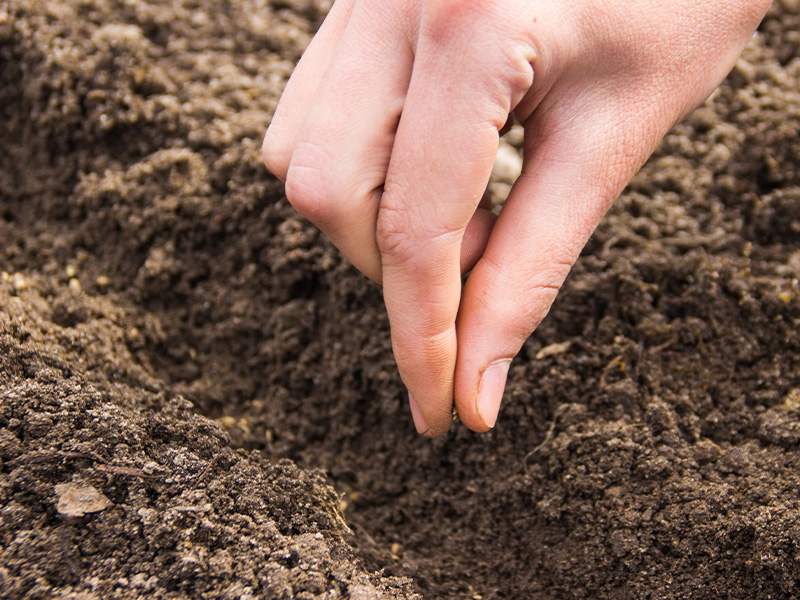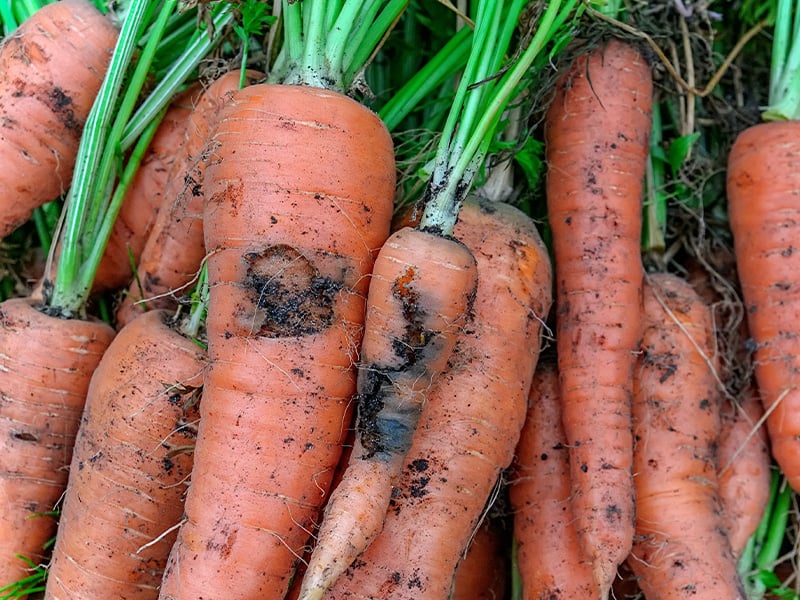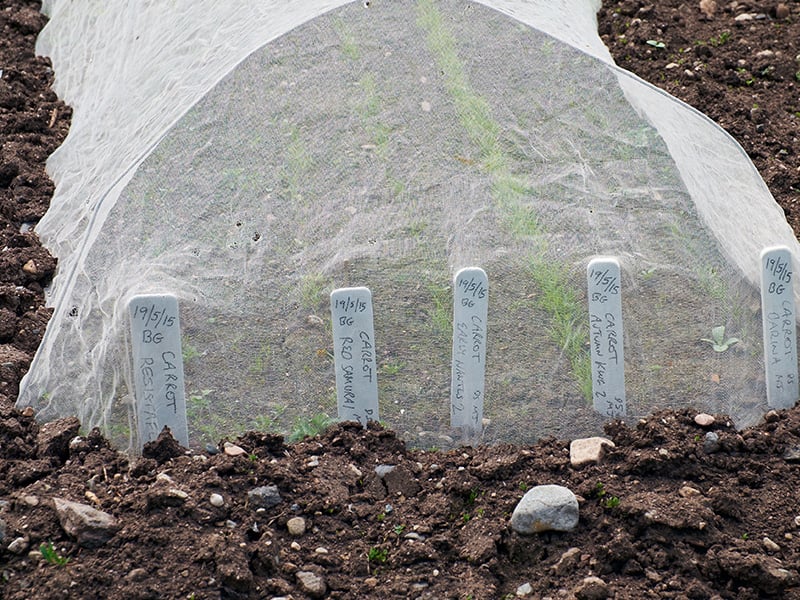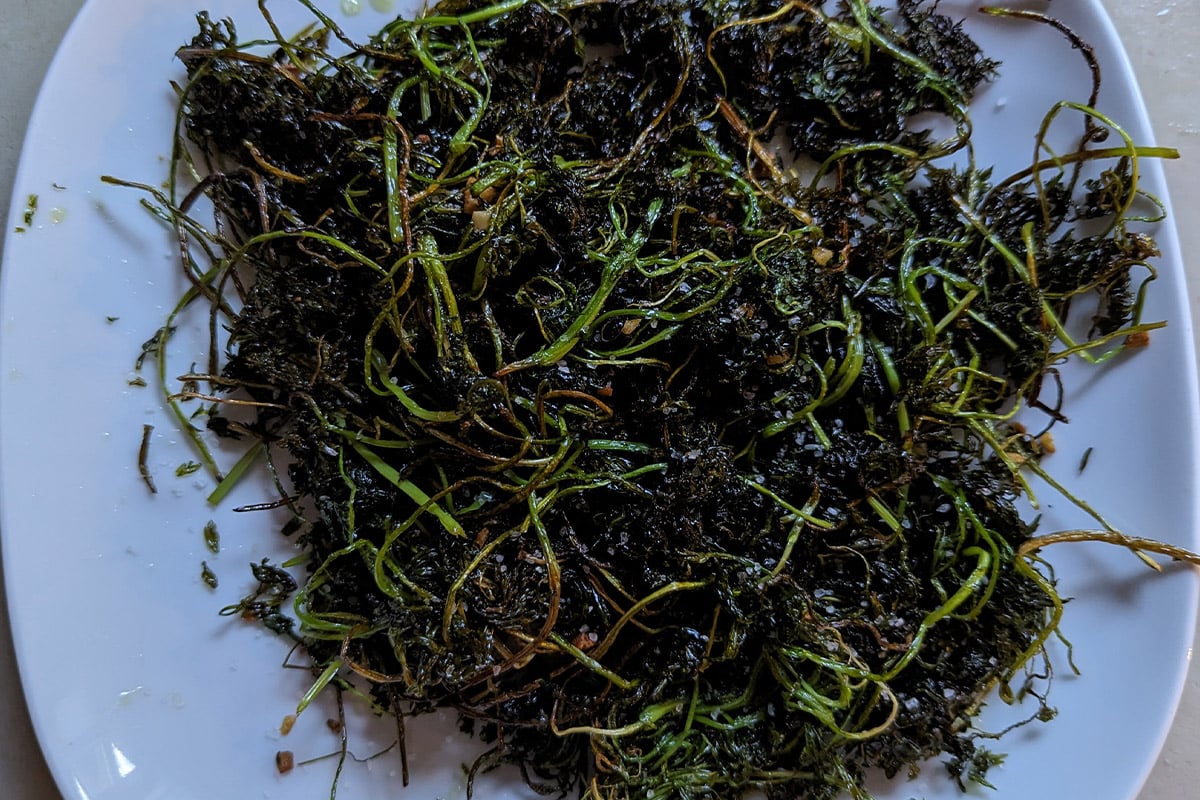Carrots can be tricky at first, but once you know what you are doing, they become an easy and reliable crop to grow. Nothing teaches quite like getting out there and doing it, but arm yourself with as much knowledge as possible so you don't make basic mistakes. My quick guide will talk you through growing carrots, step by step.
Where To Grow
Carrots will happily grow in the ground or in a container; it makes little difference to them.
They dislike stony soil and soil that is too "rich." They actually do better in poorer soils than in soils packed with too much nitrogen.
Sowing Seeds
Carrots do not like being transplanted, so most people will sow them where they are to grow. This is also why it is rare to see them for sale as plants.
You can transplant carrots, but you need to take great care not to damage the roots. A root trainer can be a good option if you need to sow them somewhere, then transplant, but for most people, sowing directly into the ground where they are to grow is the best option.
The easiest way to sow carrots is to create a shallow drill (a small trench in the soil) roughly 2cm (just shy of 1") deep. Then gently sprinkle the seeds in with your thumb and forefinger. Try to place the seeds 1cm apart, but this will be tough with the seeds being so tiny.

You can then cover the drill with the soil you dug out and water it well. If you are sowing multiple rows, then keep them 15-20cm apart.
Carrots are notorious for being slow to germinate, so you may be waiting a few weeks before you see anything happen. What is essential at this time is that you keep the soil moist. Carrot seedlings will dry out and die very quickly, which causes patchy germination for many people.
People have devised a couple of tricks to help with this. One is the cornstarch method, which I have shown here. Another is to place a plank of wood over the row of seeds once you have watered them. This helps keep the moisture in the soil while the seeds germinate.
Thinning Out
Once your seedlings have sprouted and have begun growing they will require thinning. This simply means removing some of the seedlings so that there is the correct spacing between all of your carrots. If your carrots are growing too close together, then they will never size up into edible carrots; you will be left with lots of tiny roots that you can't do anything with.
So while pulling up perfectly healthy seedlings can seem counterintuitive, it is a crucial step.
Ideally, you want to do this while the seedlings are still very young. That is because you want to get them before they have started developing a mini carrot under the soil.

Remove seedlings so you have one healthy plant with the ideal spacing before the next carrot. The ideal spacing varies depending on the variety you are growing, so check the seed packet to determine your spacing.
If you have left this job a little late and your seedlings are pretty well established, then it can be better to snip the leaves off your unwanted seedlings rather than remove them from the soil. This is because the scent of carrots (even tiny baby ones) being pulled from the soil will attract carrot fly, the primary pest you will be dealing with.
If you do thin carrots, then quickly move the removed plants away from the rest of your crop. Carrot flies are attracted by scent and you have just created a whole lot of it by disturbing the plants.
Carrot Fly
Carrot root fly is a common pest that can cause serious damage to carrots. The larvae of this small, dark fly tunnel into the roots, leaving rusty tracks and causing rot, making the vegetables unappetizing and sometimes unusable. Fortunately, there are several effective strategies to prevent carrot root fly from becoming a problem in your garden.

One of the most effective ways to prevent infestation is to use netting. The flies need to lay their eggs near your carrots for the larvae to hatch and tunnel into them. If you net your carrots with a very fine mesh, then they simply can't get to them.

You don't necessarily need to net over your crop either. Carrot root flies are low-flying insects, usually not flying higher than about 18 inches (45 cm). Erecting fine mesh or insect-proof netting around the sides of your carrot beds, with the mesh secured tightly to the ground and standing at least 2 feet (60 cm) tall, can block their access
Crop rotation is another helpful tactic. Avoid planting carrots or related crops in the same spot each year if rootfly have been a problem previously, as carrot root fly larvae can overwinter in the soil. Rotating crops helps break the pest's lifecycle.
Companion planting can also deter carrot root fly. Interplanting carrots with strong-smelling plants like onions, garlic, or leeks can mask the carrots' scent and confuse the flies. Additionally, sowing carrots thinly and avoiding bruising the foliage during thinning can minimize the release of scent that attracts the flies.
Lastly, timing can be everything. Try sowing carrots early or late in the season to avoid the peak egg-laying periods of the carrot root fly, which usually occur in spring and late summer. Some resistant carrot varieties that are less attractive to the pest are also available, offering another layer of protection. Resistafly is one such variety.
Forked Roots
A MAJOR problem with homegrown carrots is forked roots. Both the issue and solution here are very simple.
The issue is that your carrot's root probably grew into something hard, usually a stone, and then damaged the root tip. When the root tip is damaged, the carrot forks and starts growing in another direction.
As I said, the solution is simple, improve your soil. You either need to remove all stones and make the soil a nice light mix over time or grow them out of the ground in containers or raised beds.
Hardcore growers trying to get perfect straight roots even grow them in sandboxes.
Forking can also be caused when the soil is too rich, particularly in nitrogen. Carrots actually prefer poor soil. If you're worried your soil might be a little too good then try mixing some sand in, and also never manure before planting carrots!
When To Harvest
Carrots are one of those crops that are always ready to harvest, but the earlier you pull them, the smaller the root will be.
I normally pull one or two roots and see what size they are. If they are a little small, I will wait a week or two before trying another.
The easiest way I have found to harvest carrots is to push them further into the ground first, which seems to make them much easier to pull out.




Leave a Reply